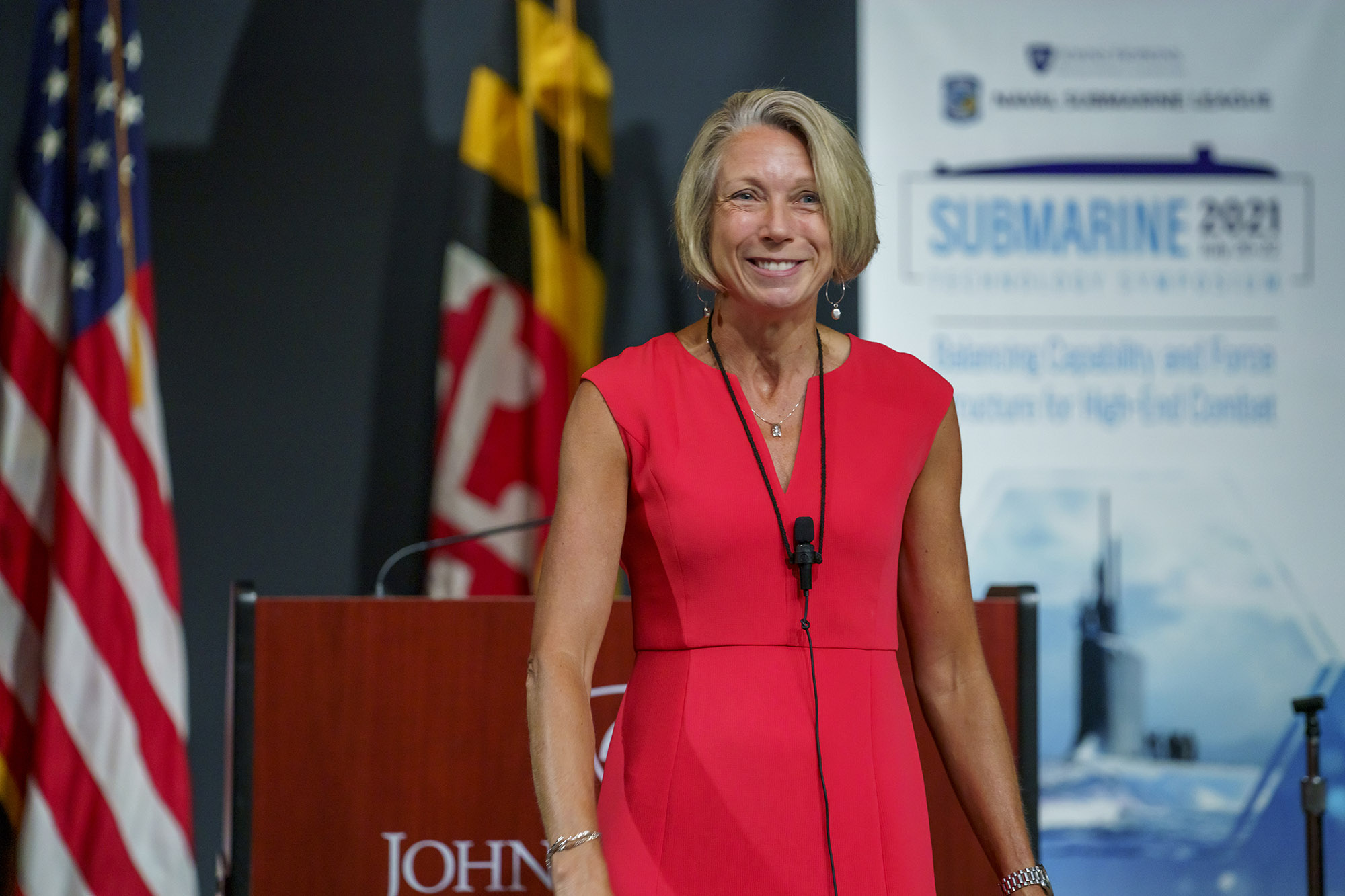News
Submarine Technology Symposium Returns to Johns Hopkins APL
After last year’s hiatus because of the COVID-19 pandemic, the annual Submarine Technology Symposium (STS) returned to the Johns Hopkins Applied Physics Laboratory (APL) this summer to foster the caliber of collaboration needed to advance key submarine technologies.
“COVID-19 helped us all appreciate things we used to take for granted,” said Lisa Blodgett, head of APL’s Force Projection Sector. “And while in-person events were put on pause, our developments in the undersea domain — and the progress of now near-peer competitors — were not.
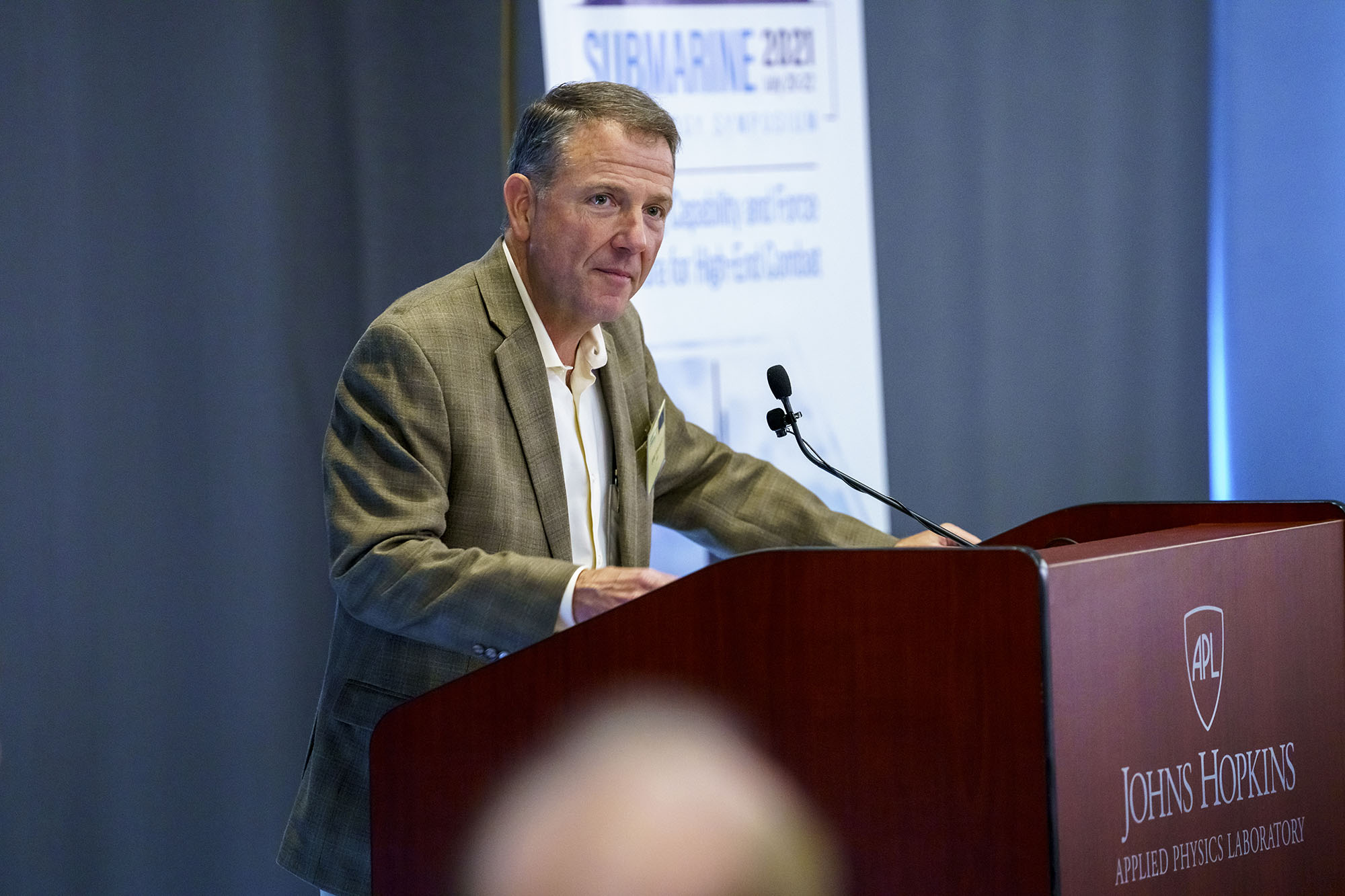
Credit: Johns Hopkins APL/Craig Weiman
“The return of STS means the return of a certain kind of collaboration that can sometimes only happen in person, and APL is proud to continue to host this special event that’s truly at the forefront of the field and defining the future of undersea capability.”
Organized by APL and sponsored by the Naval Submarine League, STS 2021 allowed military, industry and academic leaders to gather in person from July 20 to 22. Held primarily in APL’s Kossiakoff Center, the three days of events covered topics from developing and implementing technologies to theater undersea warfare, including high-end combat against the nation’s near-peer competition.
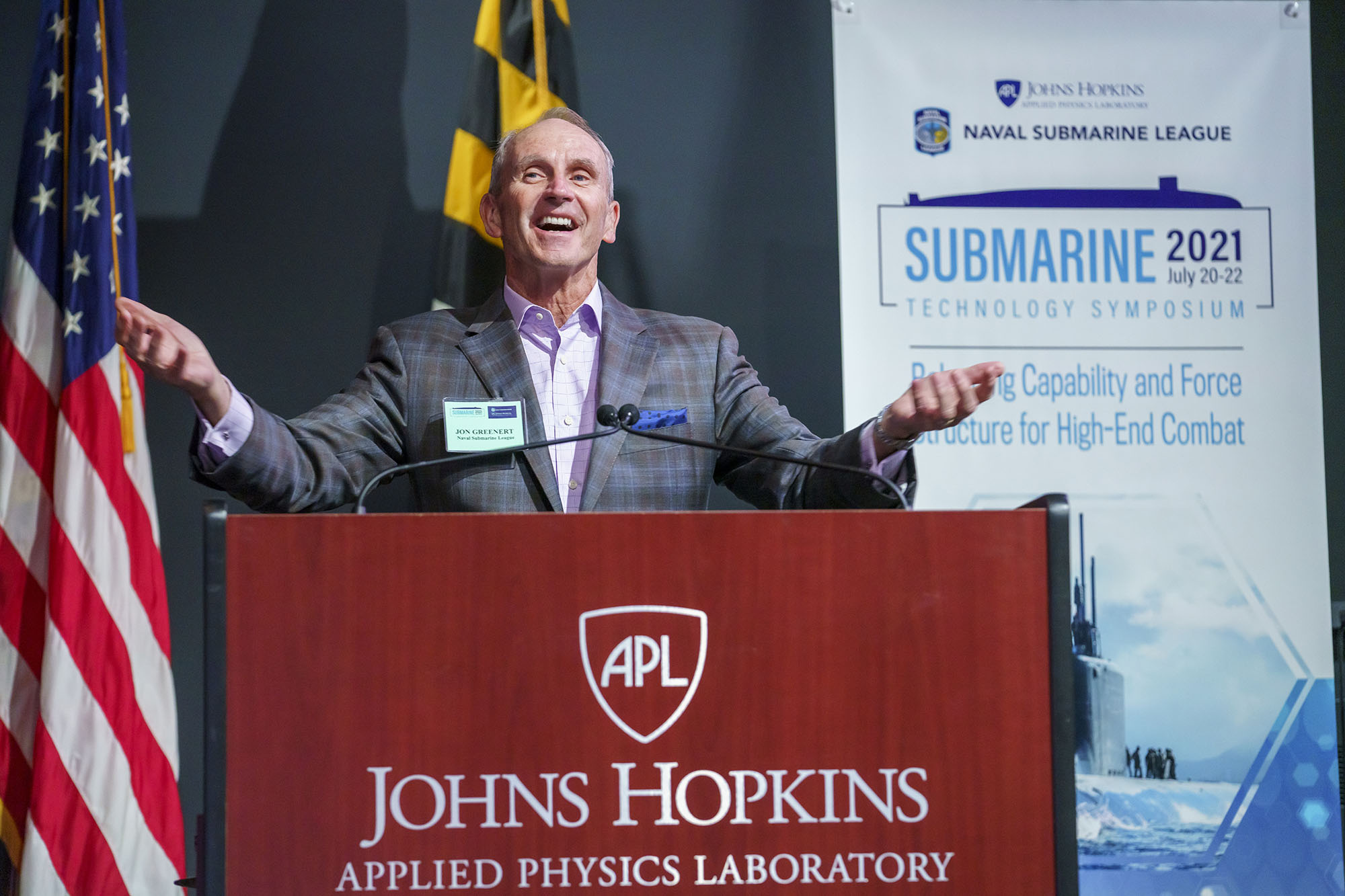
Credit: Johns Hopkins APL/Craig Weiman
APL’s Matthew Paoletti, program chair, and Blodgett kicked off the event alongside retired Vice Adm. Joe Tofalo, STS general chair, and retired Adm. Jon Greenert, chairman of the Naval Submarine League board, with opening remarks.
Remaining first-day sessions explored long-range warfare and unmanned autonomous systems.
Day two offered sessions on threat detection, the submarine role in a precision strike era, hypersonic and compact rapid-attack weapons systems, and next-generation launching.
The final day of sessions focused on submarine accumulated risk, cyber supply chain risk management, additive manufacturing and smart shipyards. “Shipyards that were built to build sailing ships are now servicing nuclear power submarines,” explained Vice Adm. William Galinis, commander, Naval Sea Systems Command (NAVSEA). “Think about how we’ve been able to transform that. We’ve certainly been able to keep up, but not in the most optimized fashion.”
Each day, U.S. Navy officers also delivered fleet briefs, providing a window into the capabilities, challenges and needs of the submarine force, including sustainment, which Galinis called “a key enabler to the effectiveness of the submarine force.”
“Our ability to get submarines through maintenance availabilities is probably, from my perspective, number one in my job jar,” said Galinis.
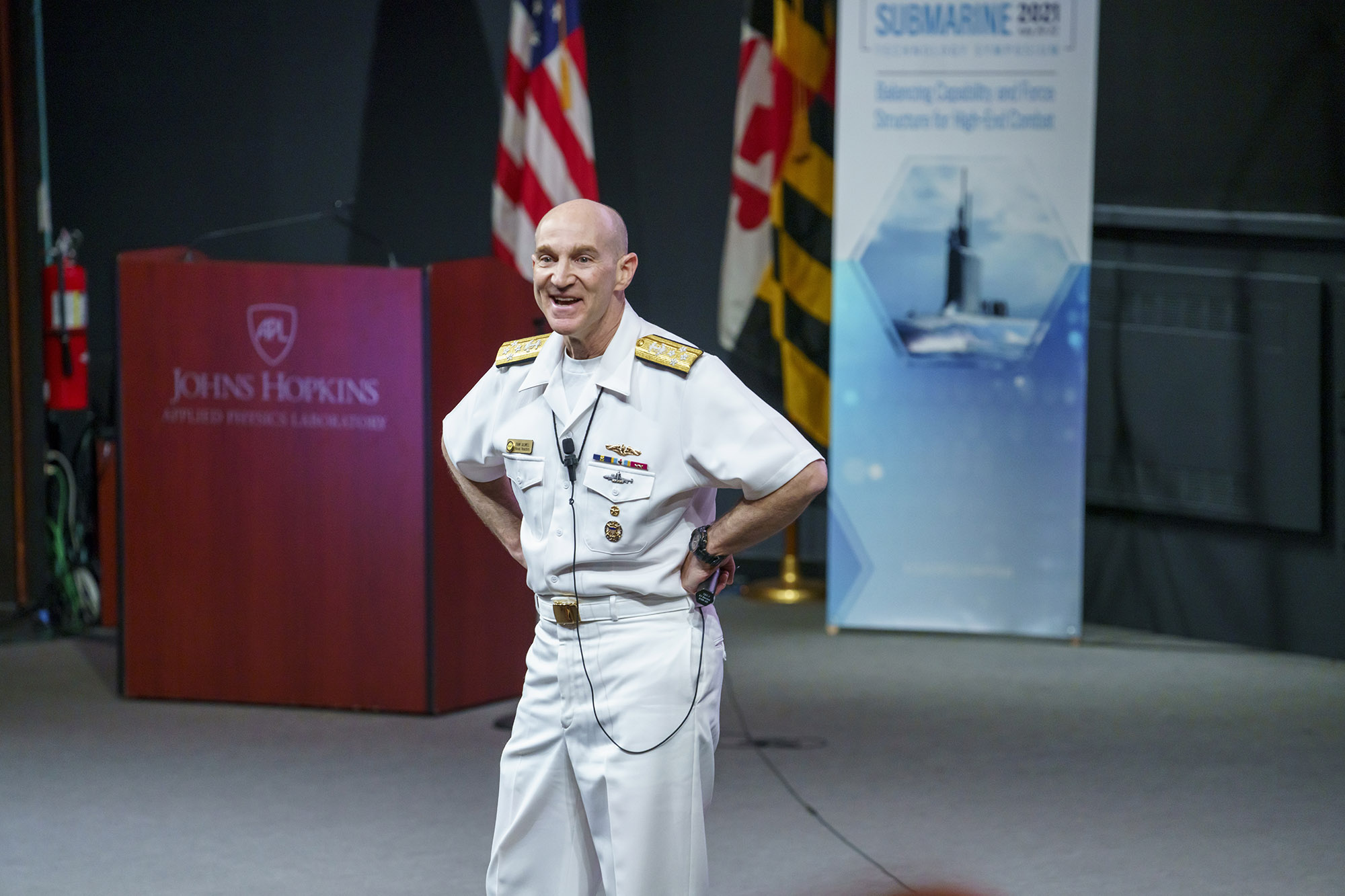
Credit: Johns Hopkins APL/Craig Weiman
“We really are in this place where the amount it takes to sustain the force we have right now is impeding our ability to invest in the technologies and the future we have,” said Acting Assistant Secretary of the Navy for Research, Development and Acquisition Jay Stefany. “So if we can use technology to both do a better job and a more affordable job at sustaining the force we have, that will free up capital for us to invest in the future.”
Keynote speakers throughout the program included Adm. Frank Caldwell, USN, Naval Reactors; Vice Adm. Daryl Caudle, USN, COMSUBFOR; Stefany; Rear Adm. Jeffrey Jablon, USN, COMSUBPAC; Rear Adm. Doug Perry, USN, OPNAV N97; Ron O’Rourke, Congressional
Research Service; Vice Adm. Johnny Wolfe, USN, SSP; Rear Adm. David Goggins, USN, PEO SUBS; U.S. Rep. Joseph D. Courtney, chairman, House Armed Services Subcommittee on Seapower and Projection Forces; and Galinis.
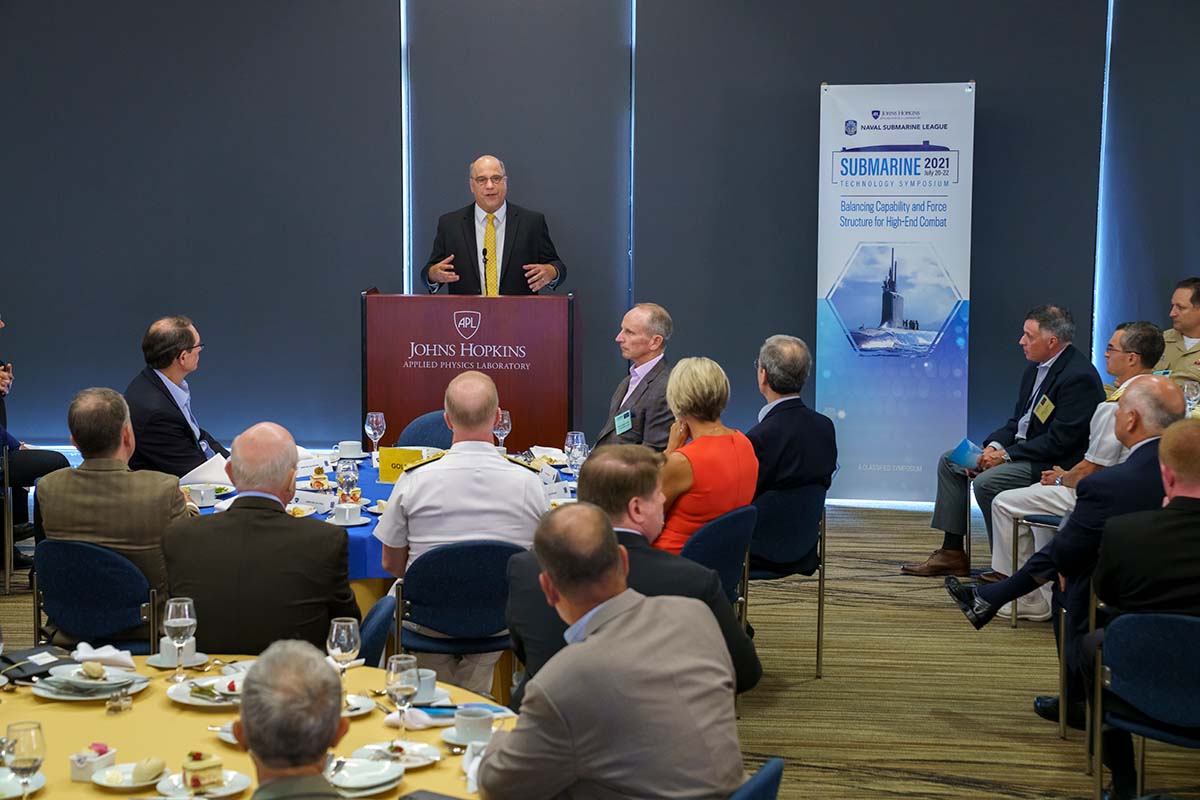
Credit: Johns Hopkins APL/Craig Weiman
APL first collaborated with the Naval Submarine League to organize the STS in 1988. The symposium was conceived as a classified forum where technologies relevant to capabilities of submarines and related systems could be examined and advanced by various experts. Today, STS is considered the premier technical conference on submarine-related technologies.
“There was maybe a hair that was moved on the submarine budget,” said Courtney. “That says a lot in my opinion about the work that the [Naval Submarine] League does and a lot of your allies do in making the strategic case for submarines, which has now really become an unquestioned priority.”
